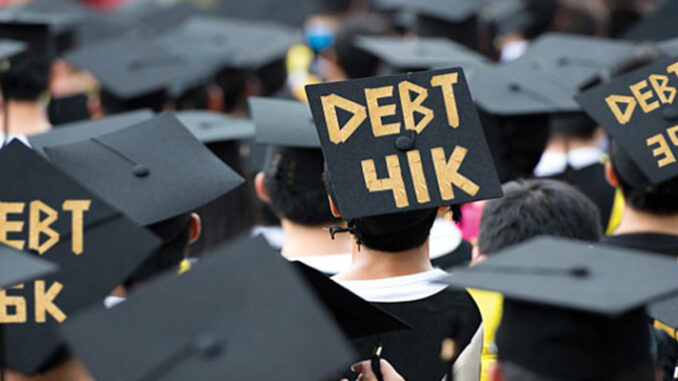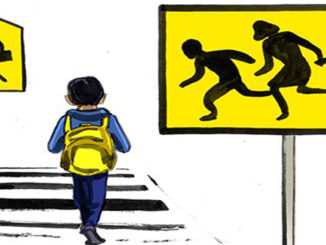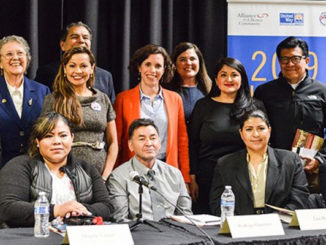
With 44 million Americans holding more than $1.6 trillion in student loan debt in an era of ever-escalating college tuition prices, action of some sort is certainly needed. But not every loan needs to be forgiven.
by Adam Looney
Proponents of forgiving billions of dollars in student loan debt have been heartened by Joe Biden’s victory in the 2020 presidential election. On the eve of the Nov. 3 vote, Senate Minority Leader Charles E. Schumer (D-N.Y.) told an interviewer that, if Biden won, he hoped the new president would adopt a proposal devised by Schumer and Sen. Elizabeth Warren (D-Mass.) that would erase “the first $50,000 of debt.” Schumer added, “We believe that Joe Biden can do that with the pen as opposed to legislation.”
Speaking to reporters on Monday, the president-elect said student loan forgiveness “does figure in my plan,” though he seemed disinclined to follow Schumer’s suggestion, citing House legislation that “calls for immediate $10,000 forgiveness of student loans.” He said he also wants to fundamentally change a neglected federal program to forgive loans of those who go into public service.
Biden is on the right track. Schumer isn’t.
With 44 million Americans holding more than $1.6 trillion in student loan debt in an era of ever-escalating college tuition prices, action of some sort is certainly needed. But not every loan needs to be forgiven.
Yes, student loans can heavily burden those who find that their education hasn’t translated into a good job. Millions have defaulted on their loans. Many more struggle to repay, hampering their ability to financially prosper. Black, Hispanic, low-income and first-generation students are the most likely to default under crushing debt burdens.
But those experiences aren’t universal. Many student loan borrowers are advantaged, well-educated high earners. About 56 percent of student debt is owed by those with masters or professional degrees, and almost 35 percent of loan balances are owed by individuals in the top 20 percent of the income distribution. Many student-borrowers need relief, but well-off borrowers who are thriving — thanks, no doubt, to their college degrees — do not.
Consider the top five degrees responsible for the most student debt: medical and law degrees, master’s and bachelor’s degrees in business, and bachelor of science for nursing. The education financed with those loans makes the debt-holders more likely to increase their earnings.
That’s why the $50,000 across-the-board relief championed by Schumer and Warren is wildly out of synch with the traditional approach of progressive policymaking. Food stamps, for instance, serve households whose median income is about $19,000 a year, and provide $2,300 in value for the average household. Families that claim the Earned Income Tax Credit — the largest cash income support for working families — earn about $36,500; their average annual benefit is about $2,200. The median income of parents of Pell Grant recipients was about $28,800.
By contrast, the median income of households with student loans is $76,400. Even if debt forgiveness were capped at $50,000, according to the 2019 Survey of Consumer Finances, the average benefit to these households would be roughly $26,000.
In sheer magnitude, canceling $50,000 in student debt would rank among the largest transfer programs in U.S. history. At a cost slightly above $1 trillion, it would equal the total amount spent on cash welfare since 1980. And its largest effect would be to improve the finances of college-educated workers, who have already tended to be winners in an economy marked by ever-rising inequality.
A better approach would cap forgiveness at $10,000, as Biden and House legislation propose. That could eliminate debt for the 15 million borrowers with smaller balances who, paradoxically, tend to struggle most, accounting for about 60 percent of all defaults. But Biden should also consider a more targeted approach based on the income and economic circumstances of borrowers.
Under income-based repayment plans, for example, monthly payments are reduced or eliminated for borrowers whose incomes are too low and debts too high. Remaining amounts are eventually forgiven. Today, however, too few borrowers sign up for such plans, and many drop out accidentally. Using executive authority, Biden could enroll more distressed borrowers in such plans and make their reenrollment automatic. Likewise, his administration could implement forgiveness for borrowers who qualify under current law — in cases of fraud or shuttered institutions and through the existing public-service loan forgiveness program.
But broader loan forgiveness likely requires working with Congress, both to ensure effective relief for existing borrowers and to enact reforms that reduce the need for future generations to borrow. Forgiving the debts of borrowers with the ability to repay, under the Schumer-Warren plan, would require discovering new legal authority in existing law. The discharged debt would be taxable, meaning borrowers could trade modest loan payments for larger tax bills. And implementing wide-scale forgiveness without addressing college affordability would plunge the loan program into uncertainty: The system cannot survive long when students (and their parents) are offered loans that no one expects to repay.



